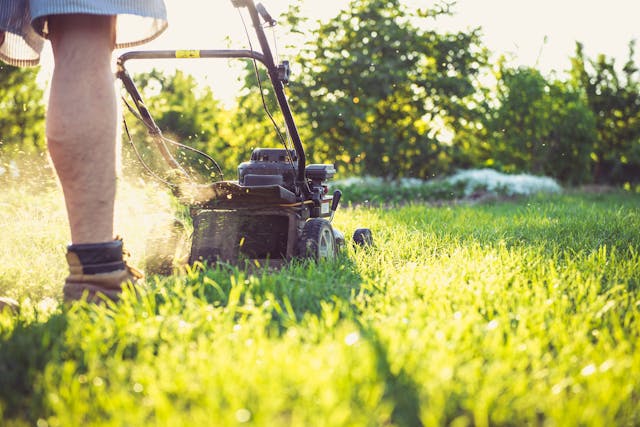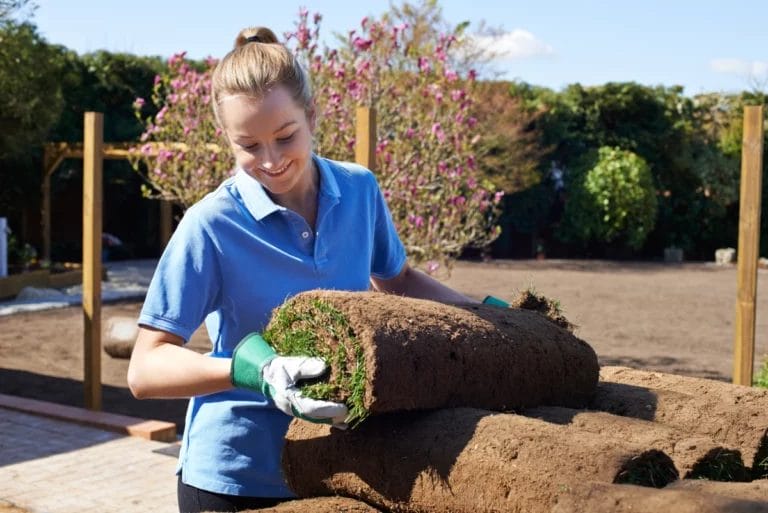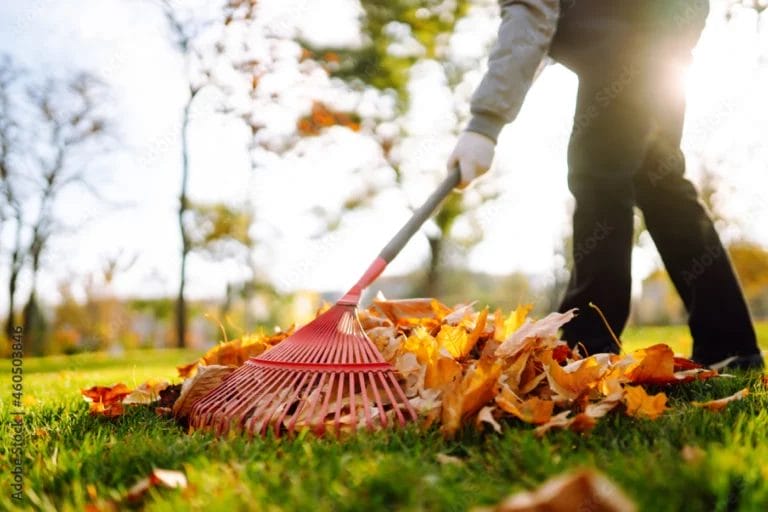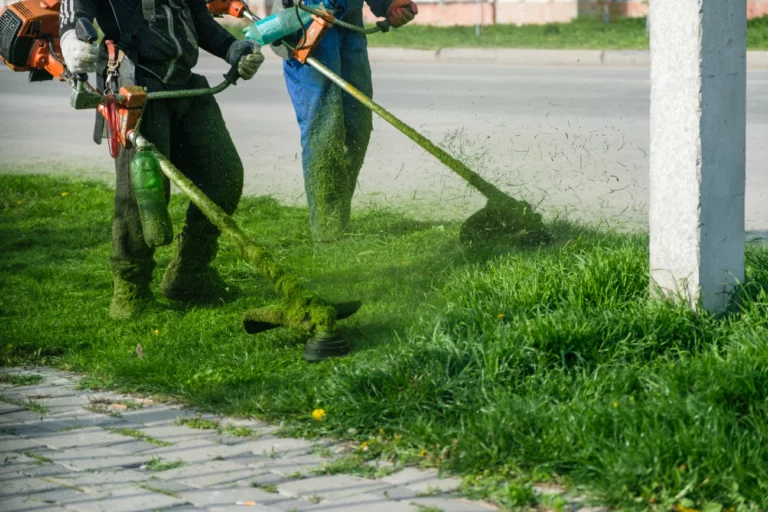As lawn care artists, you turn overgrown yards into lush, green paradises with a trusty mower that glides like a dream and trimming tools that make every edge pristine. High-quality lawn care equipment isn’t just about getting the job done; it’s about doing it with style and efficiency.
From powerful mowers and precision trimmers to aerators and spreaders that give lawns that extra pop, having the best gear can skyrocket customer satisfaction and set your business apart from the rest. Join us as we dive into the must-have tools to take your lawn care game to the next level!
Why You Need a Lawn Care Equipment Checklist
A lawn care equipment checklist is more than just a list of tools—it’s a game-changer for any lawn care business. Businesses can always be fully prepared for every job by carefully cataloging all necessary tools and supplies. This preemptive organization saves time, reduces the risk of forgetting essential equipment, and prevents costly delays. Additionally, a detailed checklist helps in routine maintenance by keeping track of tool conditions and identifying when replacements or repairs are needed. This systematic approach enhances the efficiency of operations, improves service quality, and boosts customer satisfaction, giving your business a professional edge in a competitive market.
Lawn Care Equipment Checklist
A potential list of tools for lawn care businesses can be divided between foundational tools for everyday jobs and commercial lawn care equipment for specialized projects.
Lawn Care Business Startup Kit
Just getting started or double-checking your current equipment list? Make sure you have these foundational tools to get started.
Lawn Mowers
Lawn mowers are the backbone of any lawn care business, providing the primary means to achieve a well-manicured and uniform lawn. Their efficiency and cutting precision not only save time but also enhance the visual appeal of the landscape, leading to higher customer satisfaction and repeat business.
Trimmers and Edgers
Trimmers and edgers are essential in a lawn care business for creating clean, precise lines and maintaining areas that mowers can’t reach, such as around trees, fences, and flower beds. These tools enhance the overall appearance of the lawn by ensuring every edge and corner is neatly groomed, giving clients a polished and professional finish.
Hand Tools
Hand tools are perfect for those detailed finishing touches that make all the difference. Pruning shears, hedge clippers, and weeding tools let you sculpt hedges, trim bushes, and banish pesky weeds with surgical precision. They bring an artisanal touch to your work, transforming ordinary yards into extraordinary gardens, ensuring clients are dazzled by every intricate detail.
Safety Gear
Take it from us—don’t skimp on the safety gear. At a minimum, you and your employees should be equipped with:
- Protective Gloves: Shield hands from cuts, blisters, and harmful chemicals.
- Safety Glasses: Guard eyes against debris, dust, and chemical splashes.
- Ear Protection: Prevent hearing damage from loud equipment like mowers and blowers.
- Steel-toed Boots: Provide foot protection against heavy equipment and sharp objects.
- High-visibility Vest: Ensure workers are easily seen, reducing the risk of accidents.
Maintenance Tools
Here come the tools that make sure you’re not constantly replacing the ones you have! Maintenance tools keep gear up-to-snuff to avoid accidents and costly repairs. Common maintenance tools for lawn care include:
- Lawn Mower Blade Sharpener: Ensures mower blades are sharp for a clean, even cut.
- Oil Can: Keeps machinery well-lubricated to prevent rust and extend lifespan.
- Spark Plug Wrench: Essential for maintaining and replacing spark plugs, ensuring equipment starts reliably.
- Air Compressor: Handy for cleaning out debris from tools and inflating tires.
- Grease Gun: Lubricates moving parts of machinery, reducing wear and tear.
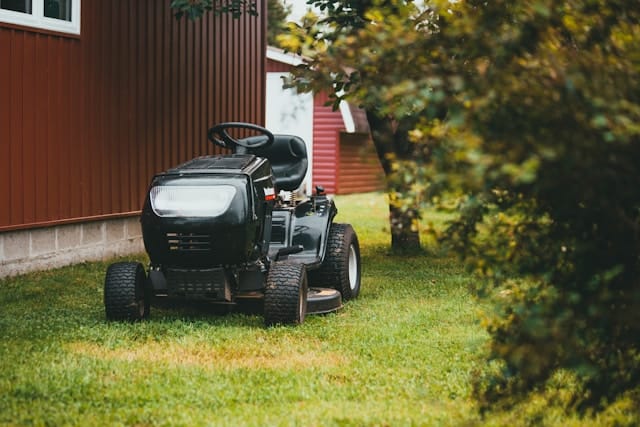
Commercial Lawn Care Equipment
Some jobs require specialized equipment to be done efficiently; from fertilizing to gardening, here are a few tools that may save the day for a big job.
Aerators
Aerators poke tiny holes in the soil, allowing roots to breathe and absorb nutrients more efficiently. By improving air and water flow, these nifty tools transform tired, compacted lawns into lush, green grass carpets. In a lawn care business, aerators are essential for keeping clients’ lawns healthy, vibrant, and picture-perfect all season long.
Spreaders
Spreaders are your go-to for creating a uniform lawn. They evenly sprinkle seeds, fertilizer, and other goodies across the grass to ensure every inch gets its share. These tools help prevent patchy growth and nutrient imbalances—which, in turn, supports the natural ecosystem of an area to grow in a healthy manner.
Sprayers
Sprayers are like the magic wands of lawn care, misting lawns with a perfect blend of water, nutrients, and pest control potions to keep them thriving. They ensure every blade of grass gets its fair share, creating a green wonderland without any fuss. In a lawn care business, sprayers are the secret weapon for delivering the kind of vibrant lawns that make clients beam with pride!
5 Tips for Maintaining and Storing Lawn Care Equipment
We’ve consulted with our top lawn care insureds to get the insider scoop on what equipment know-how has kept them thriving.
1. Scrub-a-dub-dub
Keeping tools clean in a lawn care business ensures they stay sharp, efficient, and ready for action. Clean tools also prevent the spread of diseases across lawns, keeping every yard healthy and vibrant. Plus, a well-maintained toolkit not only boosts performance but also extends the life of the equipment, turning each job into a seamless, professional routine.
2. Keep it Sharp!
Don’t let a dull tool undo all your hard work. Sharpening and maintaining your tools in a lawn care business is essential for delivering top-notch service and achieving pristine results. Sharp tools ensure precise and clean cuts, promoting healthier grass growth and an immaculate appearance that clients will love. Regular maintenance prevents rust and wear, extending the lifespan of your equipment and saving you money in the long run.
3. Oil's Well That Ends Well
Keeping equipment well-oiled—such as lubricating the mower blades and hedge trimmer gears—ensures smooth operation and prevents costly breakdowns. Regular oiling also reduces friction and wear, extending the lifespan of tools such as aerators and edgers, making every job easier and more efficient.
4. Inspect to Protect
Regularly inspecting equipment in a lawn care business, like checking the mower’s blade alignment and the trimmer’s spark plug, helps catch potential issues before they become costly repairs. Routine inspections of tools such as leaf blowers for debris buildup and edgers for proper blade tension ensure everything runs smoothly and safely.
Pro tip: Logging inspection dates and notes in a lawn care software can help you spot patterns, stay ahead of breakdowns, and keep your gear in top condition without relying on memory or messy notebooks.
5. Keep Things Safe
Keeping equipment safe involves storing tools like mowers and trimmers in a dry, secure shed to prevent rust and theft. Regularly inspecting electrical cords on leaf blowers and hedge trimmers for wear and tear can avert potential hazards and ensure safe operation. Additionally, using protective covers for sharp blades and locking mechanisms on gasoline containers minimizes the risk of accidents and maintains a safe working environment for the crew.
Insuring your tools with a reliable tools & equipment insurance policy also adds an extra layer of protection, covering unexpected damages or losses and giving you peace of mind.
FAQs About Lawn Care Equipment
Where Can I Find Reliable Commercial Lawn Care Equipment Suppliers?
You can find reliable lawn care tools and equipment suppliers through several channels. Local hardware stores and specialized gardening centers often carry high-quality brands and offer personalized service. Online marketplaces like Amazon and Home Depot provide a wide selection of products along with customer reviews for better decision-making. Professional landscaping supply companies such as GreenTouch Industries and SiteOne Landscape Supply are excellent sources for commercial-grade equipment.
Networking with other professionals in the lawn care industry or joining trade associations can also lead to recommendations for trusted suppliers.
Will Lawn Care Insurance Cover My Equipment?
Yes, lawn care insurance can cover your equipment! You can add tools and equipment coverage to your base general liability policy, which protects against damage, theft, or loss of essential gear while also addressing different risks than standard liability insurance. This type of insurance ensures that you can quickly replace or repair your equipment without significant financial strain, keeping your business running smoothly. For more detailed information and to explore your options, visit Insurance Canopy.
Mow Down the Risks with Lawn Care Insurance
Ready to elevate your lawn care game with top-notch tools and equipment? Investing in the right gear not only boosts your efficiency but also delivers that pristine, professional finish your clients crave. From robust mowers to precision trimmers, each piece of equipment is a step toward building a reputable and thriving business. But remember, protecting your investment is just as important as choosing the right tools. With easy, instant coverage from Insurance Canopy starting at just $28 a month, you can safeguard your equipment and work. So go ahead, gear up for success, and let Insurance Canopy handle the rest!

